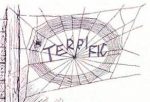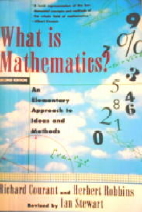|
|
A New Scientist article began with a now familiar refrain:
They call it the “unreasonable effectiveness of mathematics.” Physicist Eugene Wigner coined the phrase in the 1960s to encapsulate the curious fact that merely by manipulating numbers we can describe and predict all manner of natural phenomena with astonishing clarity…
The article by Michael […]
A special September issue of Scientific American is organized around questions about what we seem to know, and how or why we may be deceived about the nature of reality. This special September issue has the title: Truth Lies and Uncertainty. No doubt the editors are inspired, to some extent, by the challenges to […]
I have long been interested in the notion of autopoiesis introduced by Humberto Maturana and Francisco Varela in 1972. In short, autopoiesis is the model of living systems that sees every living system (from single cells to multicellular organisms) as individual unities whose living is the creation of themselves. Through the interaction of their […]
I was struck today by the title of an article in Science News that read, Before his early death, Riemann freed geometry from Euclidean prejudices. The piece, by science writer Tom Siegfried, was no doubt inspired by the recent claim from award-winning mathematician Michael Atiyah that he has proved the long standing Riemann hypothesis, one […]
A recent post on scientificamerican.com got my attention – no surprise given its title, Could Multiple Personality Disorder Explain Life, the Universe, and Everything. It was coauthored by three individuals: computer scientist Bernardo Kastrup, Psychotherapist Adam Crabtree, and cognitive scientist Edward F. Kelly. The article’s major source is a paper written by Kastrup, published this […]
I have been particularly concentrated on whether mathematics can tell us something about the nature of thought, something that we have not yet understood about what thought is made from, how it happens, how it is connected to everything else in the universe. These questions inevitably point me in the direction of research in cognitive […]
I’ve written before about how probabilities are used to understand human perception, understanding, and learning. Joshua Tenenbaum uses probabilistic inferencing to account for how we come to learn concepts, acquire language, and understand the world around us quickly, and with very little information (How to Grow a Mind). Optical illusions are created by statistical judgments […]
I have made the argument on more than one occasion that a refreshed look at mathematics may help illuminate the relationship between our experience of the physical and our experience of the thoughtful. Mathematics is a discipline characterized by complex relations among abstract things but, as has been explored from many directions, the action of […]

The slow and steady march toward a more and more precise definition of what we mean by information inevitably begins with Claude Shannon. In 1948 Shannon published The Mathematical Theory of Communication in Bell Labs’ technical journal. Shannon found that transmitted messages could be encoded with just two bursts of voltage – an on burst […]
The idea that geometry in Gothic architecture was used to structure ideas, rather than the edifice itself, has come up before here at Mathematics Rising. But I would like to focus a bit more on this today because it illustrates something about mathematics, and mathematics’ potential, that the modern proliferation of information may be obscuring. […]
|
|



Recent Comments